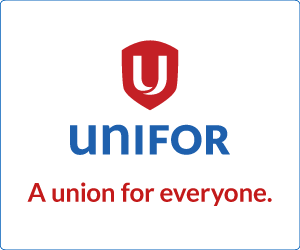Landlords are profiting from Canada’s rental shortage
The top-25 landlords held about 330,000 units in 2020—nearly 20% of the country’s private purpose-built rental housing stock
_800_553_90.jpg)
Condo towers in downtown Toronto. Photo from Wikimedia Commons.
In their corporate reports and amongst themselves, Canada’s largest landlords are remarkably honest about where their revenue comes from—from gouging and displacing tenants.
Landlords are easy to dislike. Headlines abound of landlords murdering their tenants, forcing them to live in units that are squalid, infested or both, changing the locks on units without warning, lying to push out disabled tenants, or campaigning to evict low income tenants during public health emergencies.
Canada has roughly five million renters divided between non-rental dwellings (bedrooms, closets, and garages) and roughly two million purpose-built rental units.
While no clear registry exists outlining who Canada’s landlords are, there is little doubt that Canada’s housing supply is concentrated in a few very wealthy hands.
Monopolizing the land
Within the housing supply, the private non-rental market accounts for about an estimated 38 percent of the rental housing supply. While this subset of landlords is perhaps the most difficult to track, rumours circulated by Canada’s landlord lobby that these are struggling “mom and pop” landowners are severely exaggerated.
Statistics Canada calculated that just eight percent of Canadian families reported receiving “rental income” in 2020. Those who did apply for deductions received $2,750—averaging about two percent of their annual income. Unsurprisingly, the largest share of these landlords lived in the most expensive property markets in the country: Toronto (21 percent), Montréal (14 percent) and Vancouver (11 percent). Economist and researcher Ricardo Tranjan, author of the recent book The Tenant Class, estimates that these investors have an average net worth of $1.7 million.
How many units these landlords rent out is also difficult to calculate exactly. But recent datasets from Statistics Canada glean some insight.
StatCan estimates that those who own multiple units account for nearly one-third of total home ownership. While the data is imperfect, this is a small share of homeowners in most major areas. In Toronto, for example, these multiple property owners accounted for 396,150 of Toronto’s 2,295,505 homeowners; in Vancouver they accounted for 153,850 of the city’s 946,995 owners. In a longer term analysis, real estate news site Better Dwelling observed the share of homes owned by landlords increased by roughly 80 percent from 2001-2021. In 2021, StatCan also calculated that half of the condos (which make up half of the housing stock) in Toronto, Montréal, and Vancouver are also owned by investors—comprising a total 840,045 units overall. These investors reported an average 30 percent increase in their asset value during the same period.
Being a landlord isn’t a job
These landlords, however “small” they claim to be, are a drain on society. They do no work, they provide no services, and they commodify the labour of others for their own profits. Investors and landlords like to call this “passive income”—income generated from “something other” than working. This is why, in the US and Canada, being a landlord is not considered an occupation by statistics agencies. Yet, the fact that they own land ensures that, no matter how high the price, they will always find a buyer or renter.
As real estate investor, self-help guru and “Wealth Creation Advisor” Scott Dillingham wrote to prospective landlords in an article published earlier this year:
One of the best things about investing in property is that if you are bringing in a good amount from tenants or selling, you can quit your day job. After quitting your job, you can focus all your energy on maintaining your properties and building even more avenues for passive income.
Elsewhere, the Canadian Real Estate Network has advised that “multifamily investing” is perhaps the surest way to generate thousands of dollars in “passive income” each month.
RBC Economics promotes “passive income” as follows: “Ever hear the saying ‘let your money work for you?’ That’s the mindset behind passive income, or earnings generated with minimal effort. While active income usually comes from a job or a business that requires, you guessed it, active participation, types of passive income include things like earnings from investments or rent from investment properties.”
CIBC wealth advisors also suggest a long list of ways landlords can game the tax system to avoid any and all losses. “Most people report rental income on an “accrual basis”—they include the income in the year it is receivable and deduct expenses in the year they are incurred. In certain cases you can deduct uncollectible rent from your income,” the report advises.
Noting that landlords can seek deductions from repairs, interest and loan costs, property taxes, utilities, insurance and accounting fees, CIBC reports that “most (74%) homeowners believe that even with a negative cash flow, the tax deductions can help make an income property a worthy investment.”
Condo construction in Toronto. Photo from Wikimedia Commons._800_533_90.jpg)
Canada’s purpose-built market
Canada’s two million purpose-built rental units are even more concentrated. In 2021, Policy Options observed that Canada’s top-25 landlords increasingly dominate the rental housing markets of whole cities. “In some communities, financial firms have effective monopolies over the local market.” According to the Canadian Journal of Urban Affairs, Canada’s 25 largest landlords held about 330,000 units in 2020—nearly 20 percent of the country’s private purpose-built rental housing stock.
Yet, since 2020, the concentration has continued, especially among the country’s 10 largest landlords. According to apartment magazine Who’s Who, almost all of Canada’s top-10 rental owners and managers have seen their stock of rental units increase. All told, they now account for over 261,800 units.
Starlight Investments saw a market increase from 31,303 units in 2020 to 61,904 in 2022 and then to 65,921 in 2023. CAPREIT’s holdings increased from 45,129 in 2020 to 47,419 in 2022 before dropping slightly to 47,300 in 2023. Boardwalk increased its stock from 33,263 in 2020 to 33,264 in 2022 and to 33,722 in 2023. While Real Star’s holdings declined slightly from 28,328 to 26,768 it increased to 27,438 in 2023. Hazelview’s holdings rose from 22,000 to 22,329 in 2022 and again to 24,210 in 2023. Skyline’s increased from 18,000 to 21,139 and 22,259 in 2023. Killam’s rose from 16,000 to 18,685 and 19,257 in 2023. Mainstreet’s portfolio too rose from 11,000 to 18,685 before dropping to 16,156 in 2023. Centurion also saw its stock of units increase from 11,786, according to its 2020 annual report, to 14,840 and then to 18,841 in 2023.
Amongst themselves, in turn, these companies are remarkably frank about where their income comes from.
In its 2022 Outlook report, Hazelview vowed to “create value” by investing in areas that are best able to secure rent increases.
We believe the key to creating value in 2022 will be to identify companies with pricing power that can raise rents on new leases and pass-through higher rental rates on existing leases to offset the impact of rising labor costs, utility expenses and property taxes. Corporate pricing power is the highest it has been in over a decade with companies (REITs included) able to pass along cost increases. Higher prices lift company revenues leading to growth in employment. Higher employment boosts consumer incomes creating a feedback loop that allows consumers to pay higher prices. We believe REITs that can grow margins in the face of rising cost pressures will outperform in 2022. Property types with short lease durations can reset lease rates more frequently are in a more advantageous position to grow cash flow. Concurrently, lease structures offer inflation protection with built-in rate increases tied to inflation. In 2021, we estimate approximately 2/3 of the sector’s total return came from multiple expansion with the balance from earnings growth. In our view, earnings growth will be a more meaningful driver of performance.
CAPREIT’s 2022 annual report also advised its investors that its revenue growth is dependent entirely on the usual combination of rental shortages and future rent hikes: “Prudent and responsible monthly rent increases and consistent near-full occupancies will also contribute to increased revenues in the years ahead.”
In particular, CAPREIT also reported to its shareholders that rent “turnover,” whereby the company can hike rent between tenants, has been the secret to its success.
Average monthly rents across the total portfolio increased by 4.9% compared to the end of last year, driven primarily by rent uplifts on suite turnover. In 2022, we recorded our highest growth in rent on turnover to date, at 24% and 15% for the fourth quarter and year ended December 31, 2022, respectively, confirming the increasingly constructive fundamentals of the Canadian residential rental market.
Starlight Investments also declared its intention to profit from the rental shortage in Canada. “We think there is a definite housing shortage, or almost a crisis level in Canada,” said Starlight’s CEO in 2019, “and the good news for investors is there is no easy solution in sight.”
Skyline’s tenant handbook notes that it aims to cover its expenses with “rent increases.” Vice-President BJ Santavy said more bluntly that “Tenants are the backbone of a rental housing provider’s business.”
Killam’s 2022 annual report says it considers, among prospective risks to its profits, any and all “laws and regulations providing for compliance with various housing matters involving tenant evictions, work orders, health and safety issues or fire and maintenance standards.”
Leveling the land
Under capitalism, housing is made to serve investors and speculators, ever eager to appropriate land because it is a natural monopoly. As Marx explains:
The prices of things that have no value in and of themselves—either not being the product of labour, like land, or which at least cannot be reproduced by labour, such as antiques, works of art by certain masters, etc.—may be determined by quite fortuitous combinations of circumstances. For a thing to be sold, it simply has to be capable of being monopolized and alienated… Landed property presupposes that certain persons enjoy the monopoly of disposing of particular portions of the globe as exclusive spheres of their private will to the exclusion of all others. Once this is given, it is a question of developing the economic value of this monopoly, i.e. valorizing it, on the basis of capitalist production.
The result is perpetual increases in land prices and, as a knock-on effect, in rents. These increases, despite what landlords and their lobbyists say, have little to do with “risk” or the cost of maintenance. Rather, they reflect what the Bank of Canada calls “land value,” or what Marx called “ground rent”—the capitalist’s legal monopoly over a portion of the earth.
Socialism would make more land the common property of the working class, in all meanings of the phrase, and provide housing for need rather than profit.
Mitchell Thompson is a writer, editor and occasional radio producer based in Toronto.










